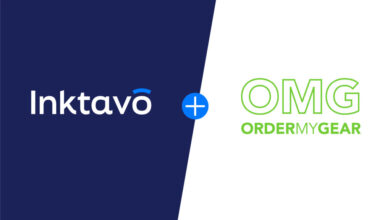Saving money and reducing your bottom line is necessary for any business. For many machine embroidery businesses, the answer is to reduce the amount of money spent on thread. Less money spent on purchasing thread will result in less cost for the business, which results in greater profit, right? Unfortunately, no.
“You get what you pay for” is an old saying for a reason. Inexpensive or cheap thread seems like a good bargain, in theory, but after you add up the costs of running cheap thread, it becomes clear that cheap thread comes with a high cost.
Cost No. 1: Cheap thread may break more easily. Cheap thread is often re-dyed, making it more fragile. An increase in thread breaks means more time your machine is idle. If you’re not running your machine, you’re not making money.
Cost No. 2: Cheap thread may have uneven dye lots. If you’re embroidering multiple garments for a business or organization, color consistency is key. Cheaper thread could mean cheaper dyes and poor dying procedures, resulting in uneven dye lots and color.
Cost No. 3: Cheap thread may have an uneven thickness. Uneven thickness causes lumps, bumps, and uneven stitches. Thinner thread results in more thread being necessary to fill the design, which means higher thread usage. That means you’re stitching through cones at a faster rate and needing to replenish your stock more often to keep up.
Cost No. 4: Cheap thread may not be colorfast. If your customer returns a garment one week after it was picked up because the thread dye ran after one wash, you’re in trouble. Now you must replace the garment and re-do the embroidery job, most likely at no cost to the customer. You can say goodbye to whatever profit you made on the original job.
Purchasing cheap thread is a gamble. You’re gambling that there may or may not be problems. Maybe you’ll get lucky and find that cheaper thread works for you, but are you willing to find out when it’s too late?
Do your research to find a solution that’s reasonably priced and made to the highest quality standards.



